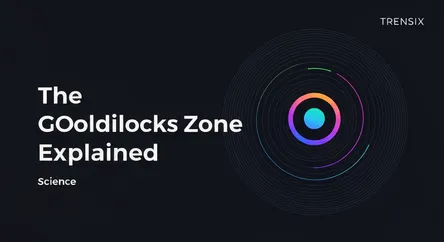Science
The Goldilocks Zone Explained

Discover the Goldilocks Zone, the 'just right' region around a star where planets could support liquid water and potentially life.
What is it?
The Goldilocks Zone, officially known as the habitable zone, is the orbital region around a star where conditions are not too hot and not too cold for liquid water to exist on a planet's surface. This 'just right' positioning is considered a crucial ingredient for life as we know it. A planet too close to its star would be scorching hot, causing water to boil away, while one too far would be a frozen wasteland. Earth resides comfortably within our sun's Goldilocks Zone, which has allowed life to flourish.
Why is it trending?
The term is trending due to the explosion in exoplanet discovery. Advanced telescopes like the James Webb Space Telescope are constantly identifying new planets outside our solar system. A key metric for assessing these distant worlds is whether they orbit within their star's Goldilocks Zone. Every time a potentially rocky, Earth-sized planet is found in this region, it generates significant excitement among scientists and the public, fueling speculation about the possibility of extraterrestrial life.
How does it affect people?
The search for planets in the Goldilocks Zone directly connects to one of humanity's most profound questions: Are we alone in the universe? It gives astronomers a tangible target in the vastness of space, helping to prioritize which of the thousands of exoplanets deserve closer study. The concept inspires public interest in space exploration and science, and the potential discovery of a truly habitable world would fundamentally alter our understanding of our place in the cosmos.